TEXT BY DEEKSHA JHALANI
PHOTOGRAPHS BY AANCHAL MALHOTRA
Delhi, India
My paternal grandmother, Gopali Devi, was all of 18 when she got married and found herself amidst Old Delhi aristocracy – a far cry from her humble origins in Birati, a tiny suburb of Calcutta, West Bengal. The fifth and arguably the most beautiful child amongst an army of 10 siblings, she enjoyed a more liberal upbringing as compared to her elder sisters. From enrolling in swimming lessons to wearing A-line coat frocks (as opposed to sarees her sisters wore) to bagging a role in the dramatics team at school – she attributes these ‘indulgences’ to the fact that her parents had their hands full by the time she arrived and didn’t care much for a few broken or bent rules.
It was a family friend that brought in a marriage proposal for her, all the way from Chawri Bazar in Old Delhi. Her parents were already on the lookout for a suitable match so when one arrived from a reputed family, they didn’t mind that she would be my recently widowed grandfather, Hari Nath Jhalani’s second wife and would have to look after his son from the first marriage. And so only a few months after she turned 18, she landed in ‘Bari Haveli’ or ‘Sheesh Mahal’ as it was sometimes called due to the multicoloured cut-glass windows, where old money and traditions were fiercely guarded by the 40 odd members living under its roof. They were married in Bengal on February 5, 1953 and arrived in Delhi two days later by train, on February 7. Unfamiliar with the language and wealth, and trying to navigate her way through a new set up, my grandmother took to listening and observing fervently to find her own voice within this new family setting.
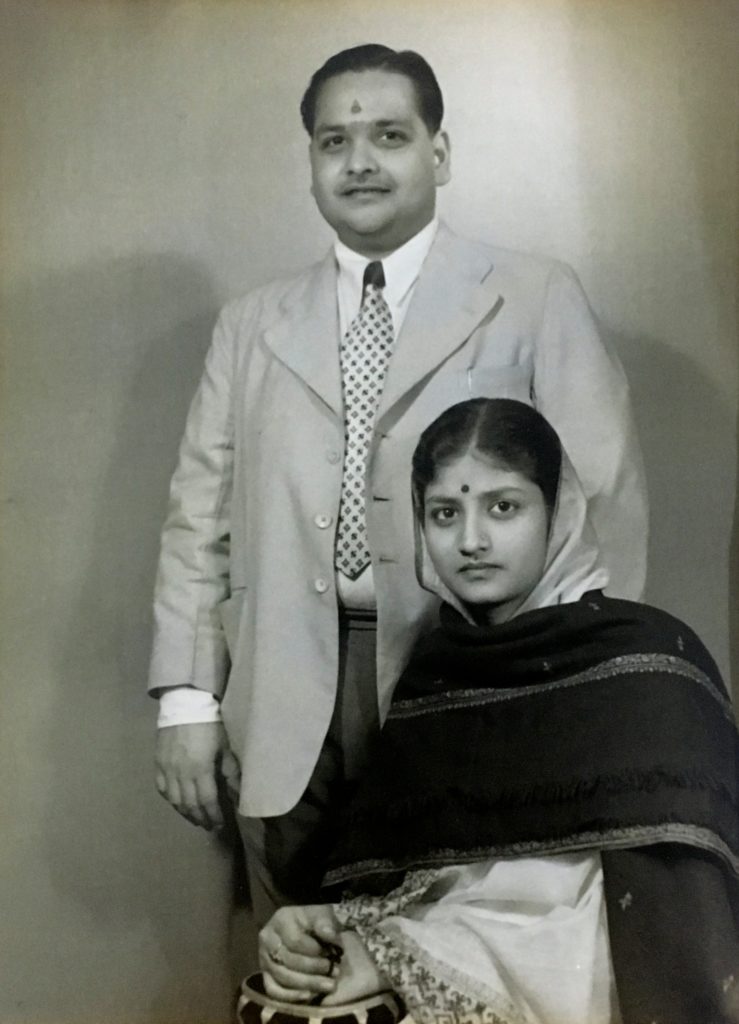

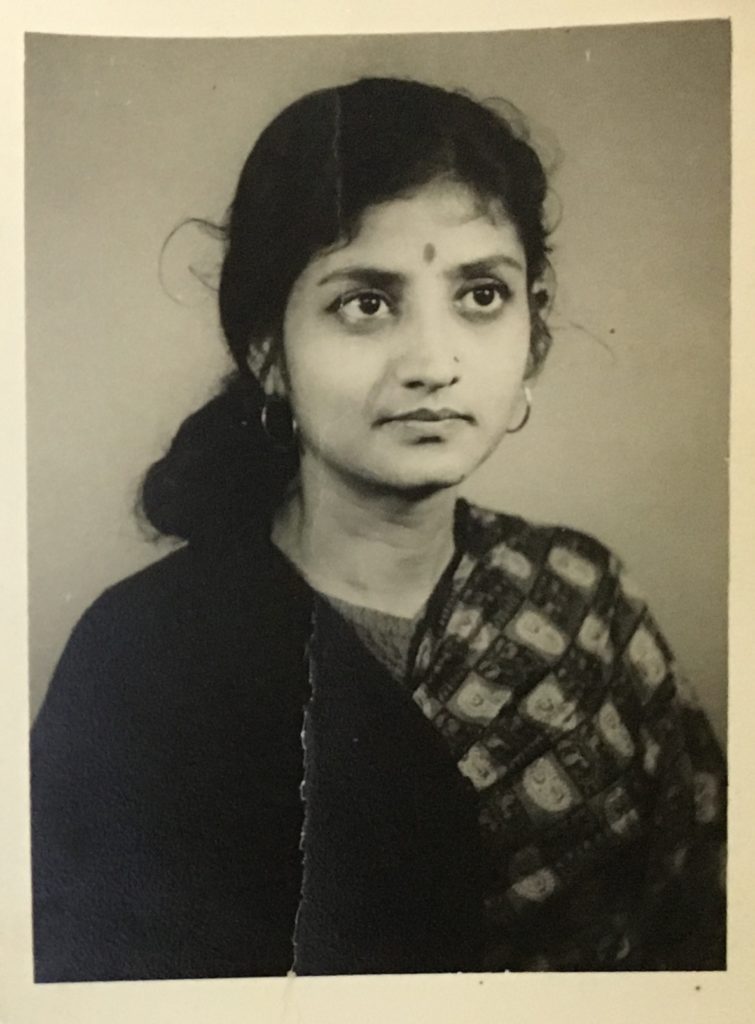
One of her aides in the process of acclimatizing to her new environment, was the family cook, Misser ji. Custodian of lost and aged recipes, raconteur par excellence and caretaker of all the silverware used for cooking and serving – the young girl that my grandmum was, latched on to him to not just pick up the unfamiliar language and its nuances, but also conquer palates with dishes such as ‘kulfe ki kadhi’ (kulfa being somewhat similar to a palak, spinach or bathua) and santre ka raita, beaten yogurt with oranges. She recounts recipe for this dish, that somewhat resembles ras-malai in taste – In yogurt, one must add powdered sugar (not whole sugar, as that will leave water) and saffron (kesar or zaffarn, she calls it), and mix it well. Then with a mortar and pestle, grind a few green cardamom pods (eliachi) and finally, peel and de-seed orange slices and mix it all in. The delectable orange, pudding like concoction takes both my grandmother and me back into the years, back into Sheesh Mahal, back into Chawri Bazar.
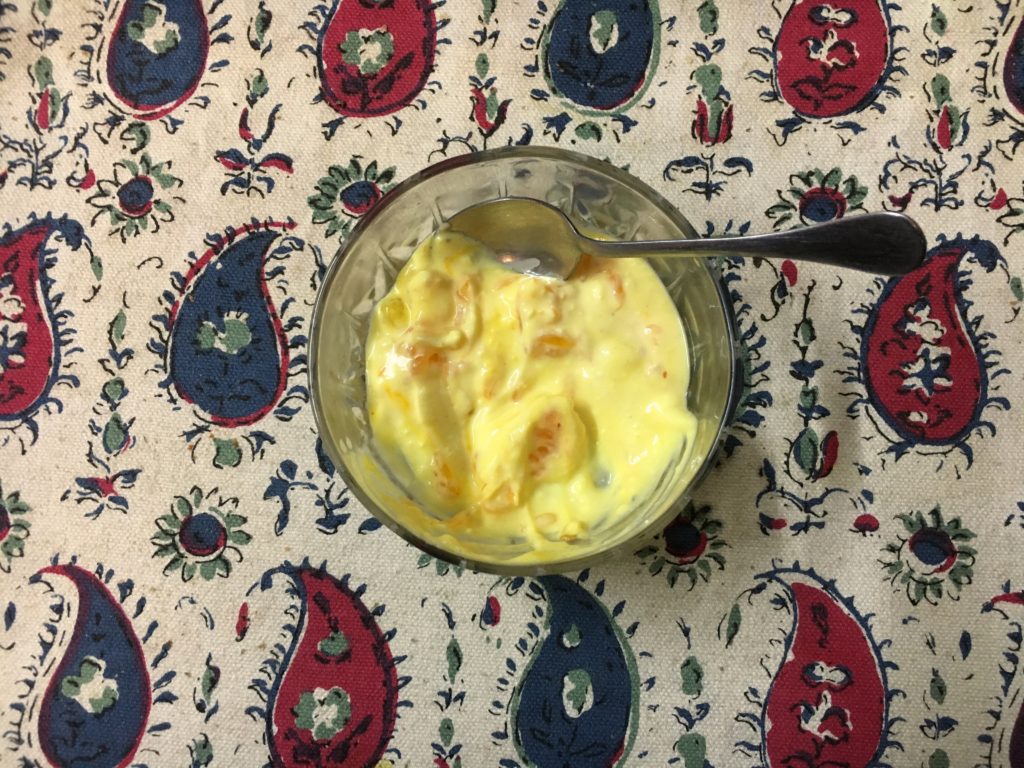
She credits most of her culinary expertise to Misser ji, who patiently taught her the difference between a ‘baatloi’ (a lota-like vessel made of silver to store liquids in) and ‘bharan ki patili’ (a kind of cookware) as well as, much to my amusement, the difference between “rot” and roti – the former being a bulkier version of the latter. She recalls items like a prized fruit juicer, a delicate multipurpose plate shaped like the Kashmiri chinar leaf upon which would be placed paan or even gulaal, natural dyes on the festival of Holi, and an ornate gulabdaan, used to sprinkle rosewater, all cast in silver.
Fondly recalling the very first time she tried her hand at the ‘dhungal’ process of making baingan bharta, she details the steps for me – The mid to large sized eggplants that she called Bharboozas were first taken to an earthen oven fitted inside the ground, and the outside burned to perfection, while the inside cooked and became soft and mushy. Then the vegetable was brought in and mashed up along with yoghurt and salt to taste. The mixture was then placed over kath koyla (wooden coals) along with hing (asafetida) and covered with a silver martaban for 10-15 minutes for the smoky flavours to settle in.
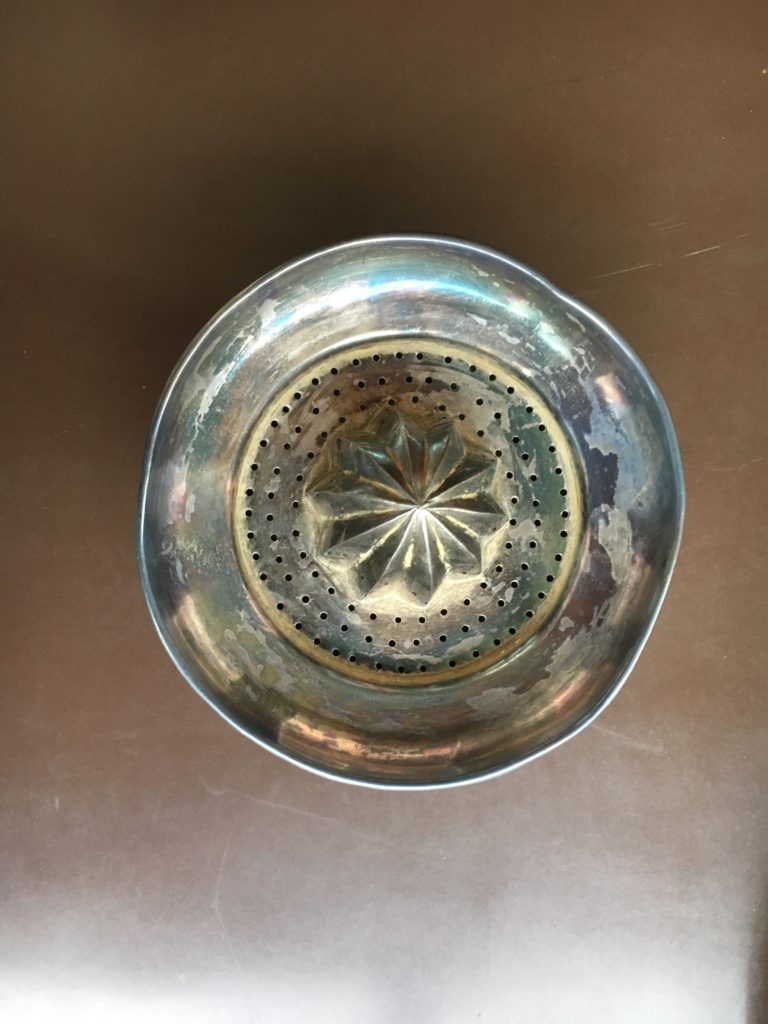
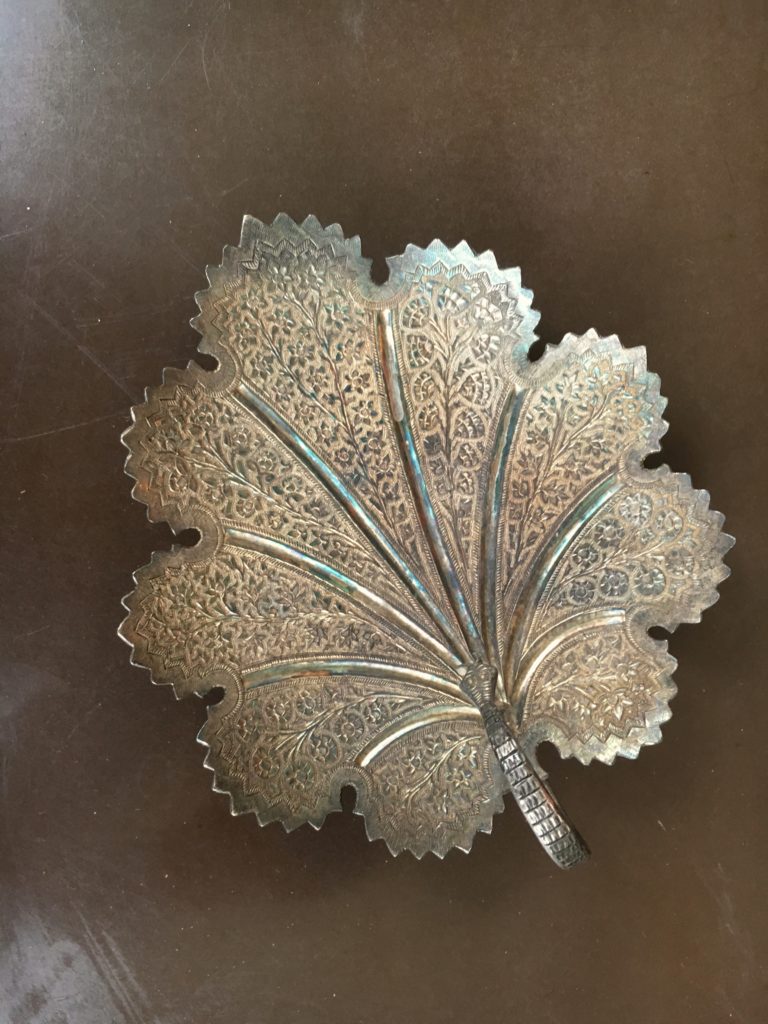
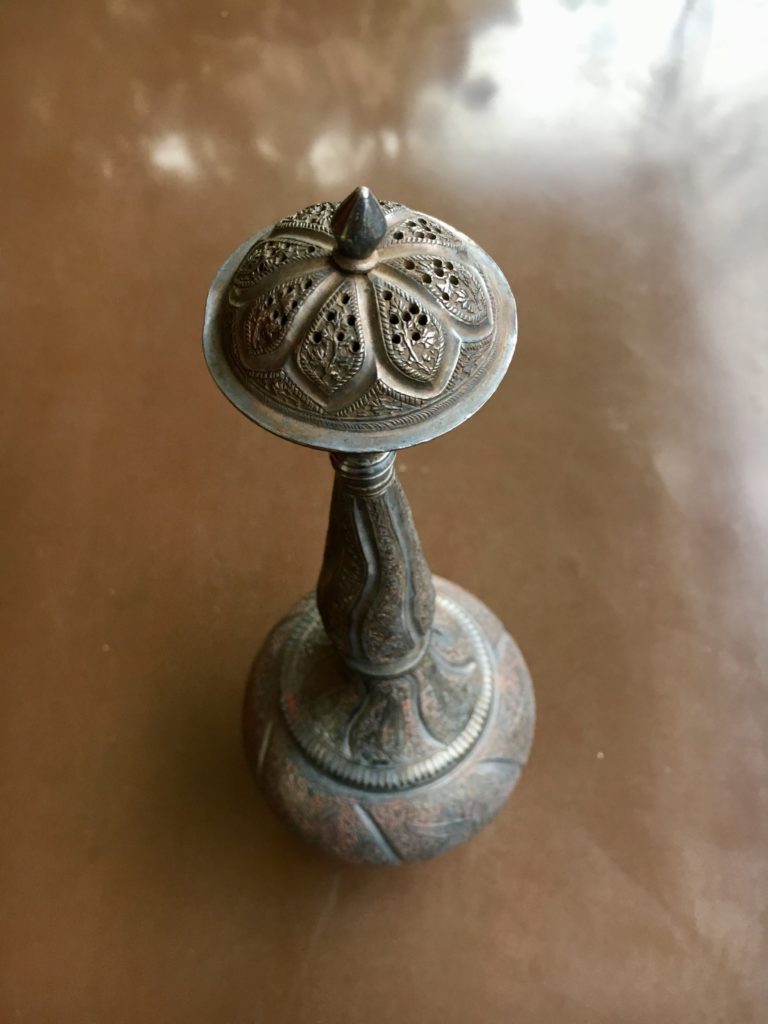
The silver bartans served a greater purpose though. Most of the thalis and katoris (plates and bowls) had names engraved on them corresponding to the family member they belonged to. This practice helped her memorize the names, the relationship she shared with the person as well as what they liked to eat. My grandmother still possesses the utensils belonging to my grandfather and his brother, upon which their names can clearly be read, along with the city: Shri Nath Hari Nath Jhalani, Dilli.
For instance, Lesua ki subzi (a green vegetable resembling an olive in appearance) was her sister-in-law’s favourite, while my grandmother herself developed a special fascination for kachnar (a variety of spring flowers) ka raita. The buds of the kachnar tree – also known as the butterfly or orchid tree – considered a delicacy, were available only in the months of March and April and were quite expensive to procure. She would boil the buds and then allow them to cool, and then mix in with yogurt, cumin seeds and salt. Kesar dahi was the dessert of choice for practically everyone in the house. She narrates in great detail the art of sieving the yoghurt through the finest Murshidabadi muslin and mixing it in with saffron especially sourced from our family home in Kashmir. Served chilled.


Each of the family members kept a silver lota filled with water by the side of their bed – a habit my grandmum has maintained over the years and believes to be the “ram-baan” (the surefire way) for enviable skin. She was also entrusted with a lot of silver utensils by her mother in law. One of them was a huge silver thali that was taken out to serve “chappan bhog” (56 dishes) on major festivals. Over the years, as the family fragmented and fell upon unfavourable times, the thali was used to dry “tesu ke phool” (a bright yellow flower typically populating trees around Spring) on to make organic holi colours.
During a particularly trying phase of her life, she had to sell off a few valuables to keep the home fires burning. Having come from a family with limited means, she was no stranger to adversity. She had married into a family with immense wealth and a lifestyle she could never fully comprehend. From her mum-in-law and Misser ji, she learnt how to hone her culinary skills and win over her extended family, most of whom were highly skeptical of her initially. As a result, the bartans provided her with a sense of victory and validation apart from serving as a reminder of all good times and warm memories. When the debts rose in number, she chose to do away with the more unique items of personal use such as a carved silver thermos, a jooda pin (an ornate pin to hold a bun in place), a carved clothes brush and coins, instead of the dozens of katoris in her possession. She also held onto a shingaar box, complete with a hairbrush, handheld mirror, powder box and sindoor box, all made with ornately carved silver.
Her reason was simple, “kuch bhi ho, khane aur khilane ki kami nahi honi chahiye, No matter what, I should always have enough to eat and feed whoever comes knocking at my door.” Hard to argue with that logic now.
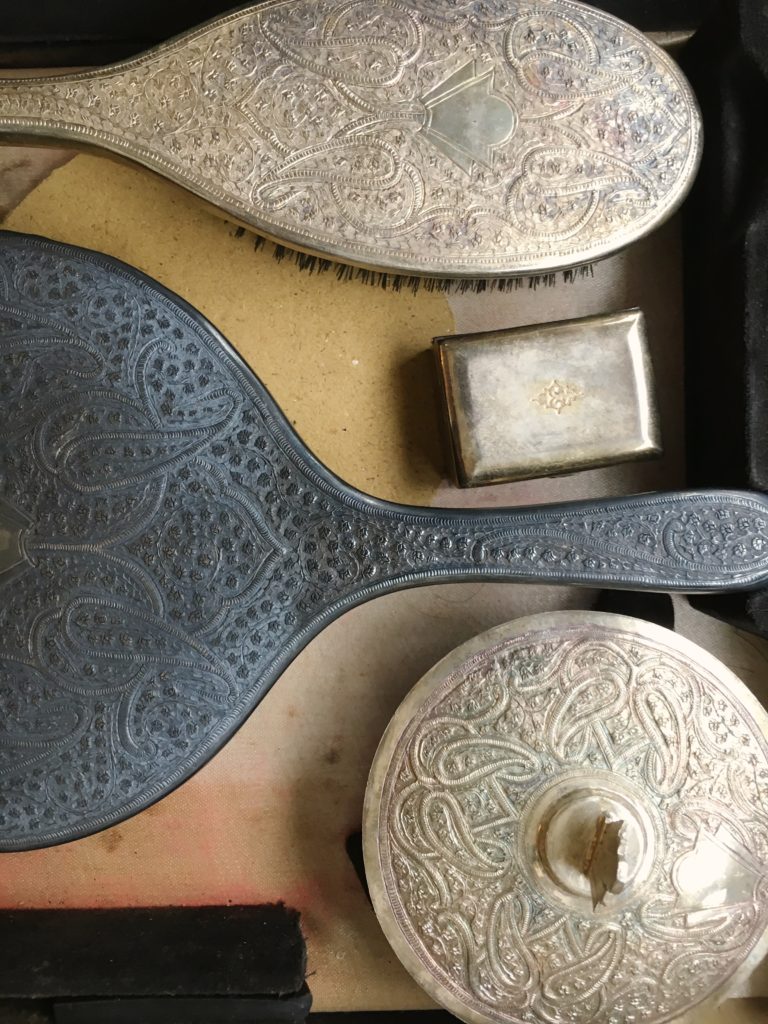
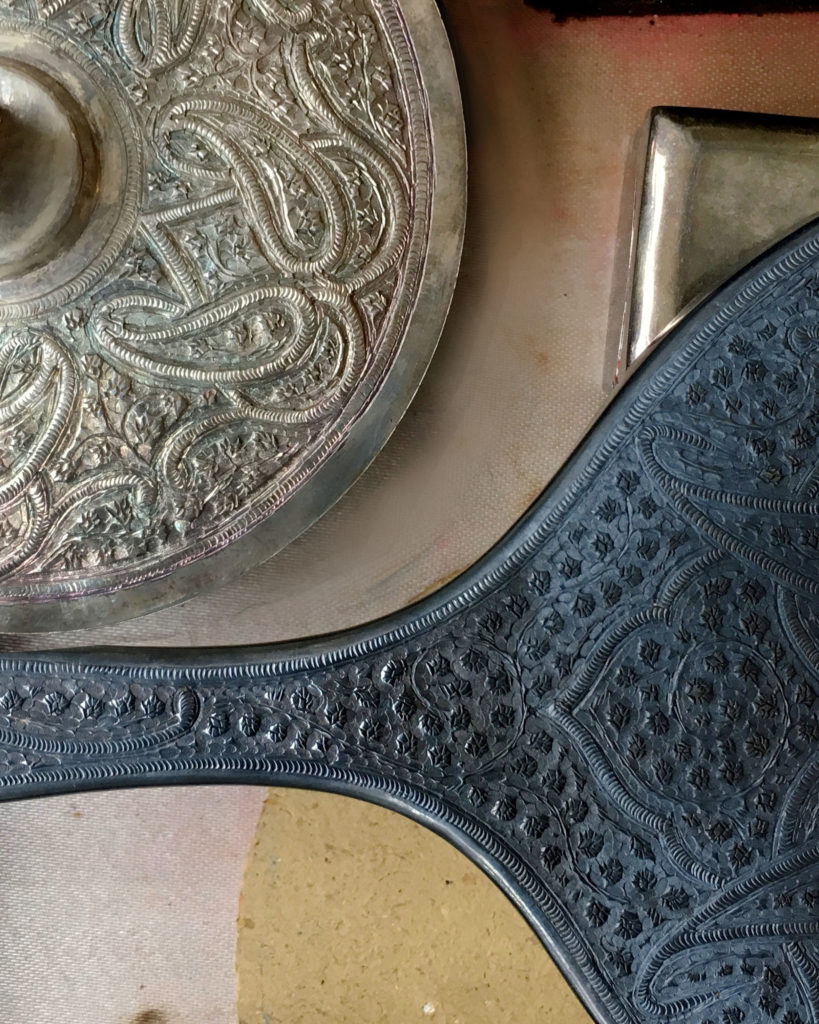
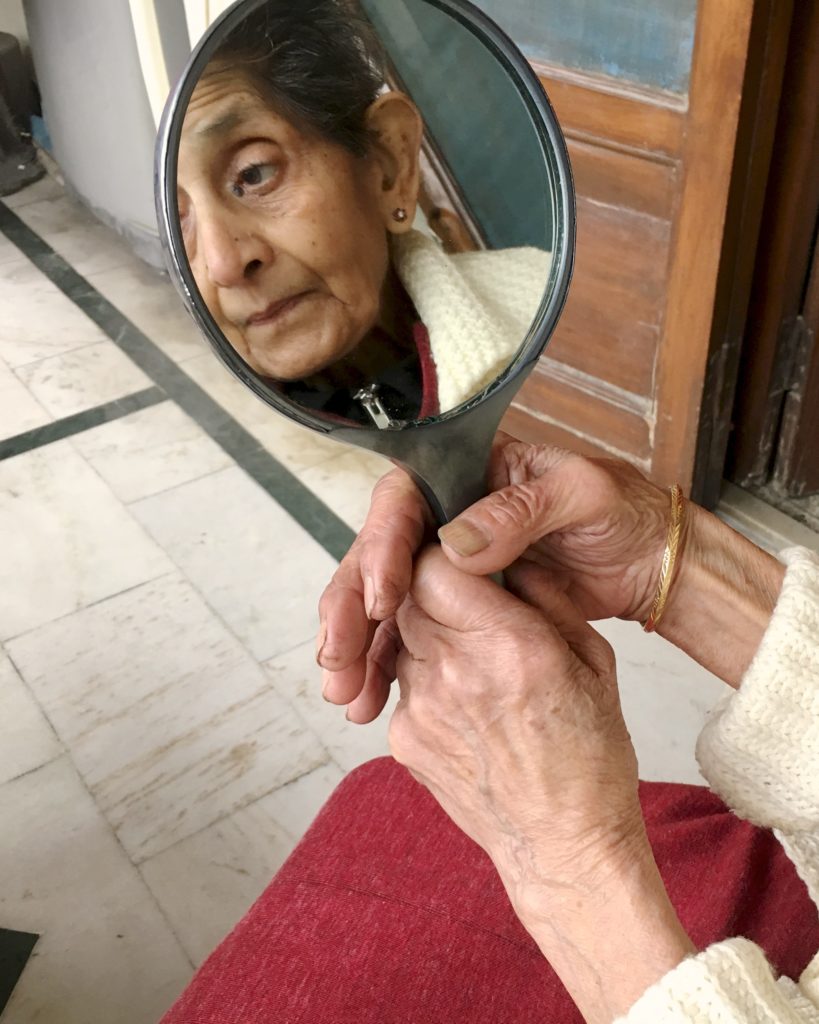

This is very beautiful. And now I want to try santre ka raita :-*